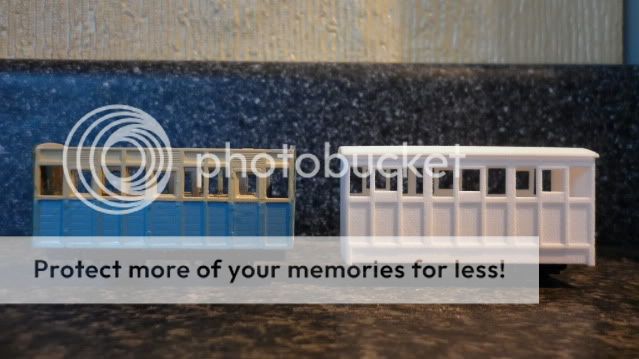Well, everyone has at least several planned out in their heads, as I have. Whilst many are out of the question, some of them would certainly be well worth looking into to.
Idea One: Large Tramway Museum
Preservation layouts. Something I love and hate with a passion. Whilst many are good and done well, I can't help but feel some just don't have the right stock to fit on the layout, ie having several big locomotives for a small station terminus isn't really that convincing. Throw a Austerity (pseudo British Railways livery or not) and a rake of multicolored Mark 1's onto it and it'll satisfy me.
As someone with a passing interest in trams, I've visited the
museum at Crich several times and been thrilled everytime I go. The fact that there are so many examples on show, although most fit the feel of the line, helps to recreate a time when such vehicles were commonplace.
In model form, it's something you could do freelance. Perhaps even take inspiration from Blackpool or Beamish for a general feel of how to do it? Regardless, you could "prototypically" run trams from several areas and have a modern setting to it.
This is one I'm really looking at doing in the future, most likely in OO. (16.5mm track gives you just over 4ft as a track gauge, not too far off from the gauges many systems used.)
Idea Two: Wisbech & Upwell Tramway Preservation Group
Trams again! Although this time, it's fair to blame the late Reverend W Awdry for creating Toby The Tram Engine, a character who is an instant favorite. Inspired by a holiday, the Reverend managed to convince The Fat Controller to bring one to Sodor.
So far, this one could easily be done. I've got a already modified Dapol 04 body, which would simply need side skirts, and two K's J70 kits. I'm tempted by the Silver Fox offering, so I may compare the two and how they build. Stock wise, there is the old D&S coach kit range, comprising the four wheel and bogie stock, but I'd either bash
Bachmann USA's Henrietta or create a 3D printed model.
I've enough reference material to start working upon this idea, and setting it a few years in the future may be the best bet. There is already a J70/Y6 replica underway, in the form of a rebuilt tram locomotive at the Nene Valley Railway, and one of the 04 locomotives is still in existence. You could easily have the preservation group using two locomotives alone, possibly in addition another loco (perhaps a Austerity or something similar) based on the line too.
One to wait for when I have more room, as I'd prefer to do a full blown scenic layout.
______
Well that's about it on the idea front for now, so I'm going to go and think them over. I could rather easily convert over to tramways altogether, but I've enough to do modeling wise right now.
Jack










































